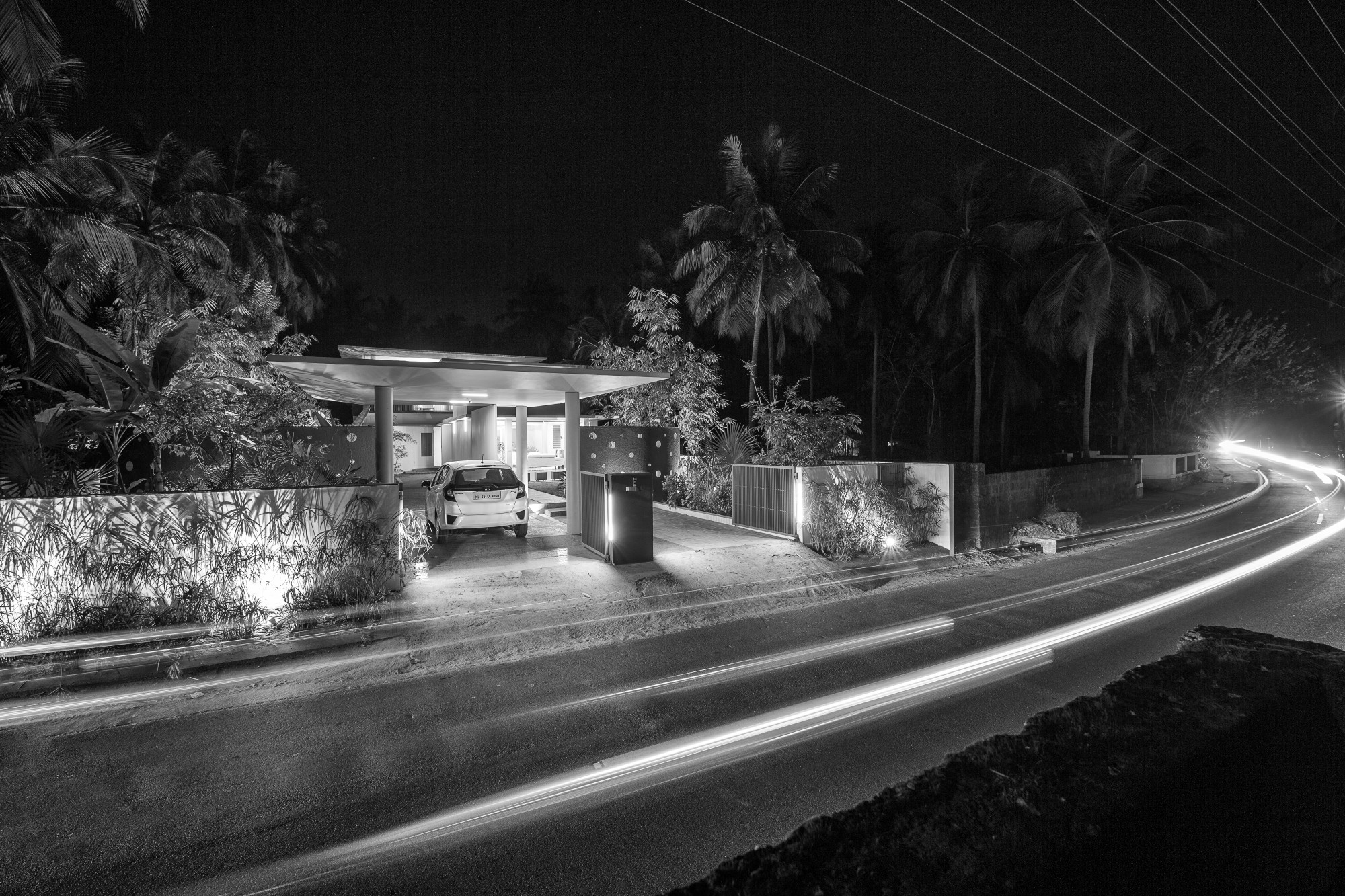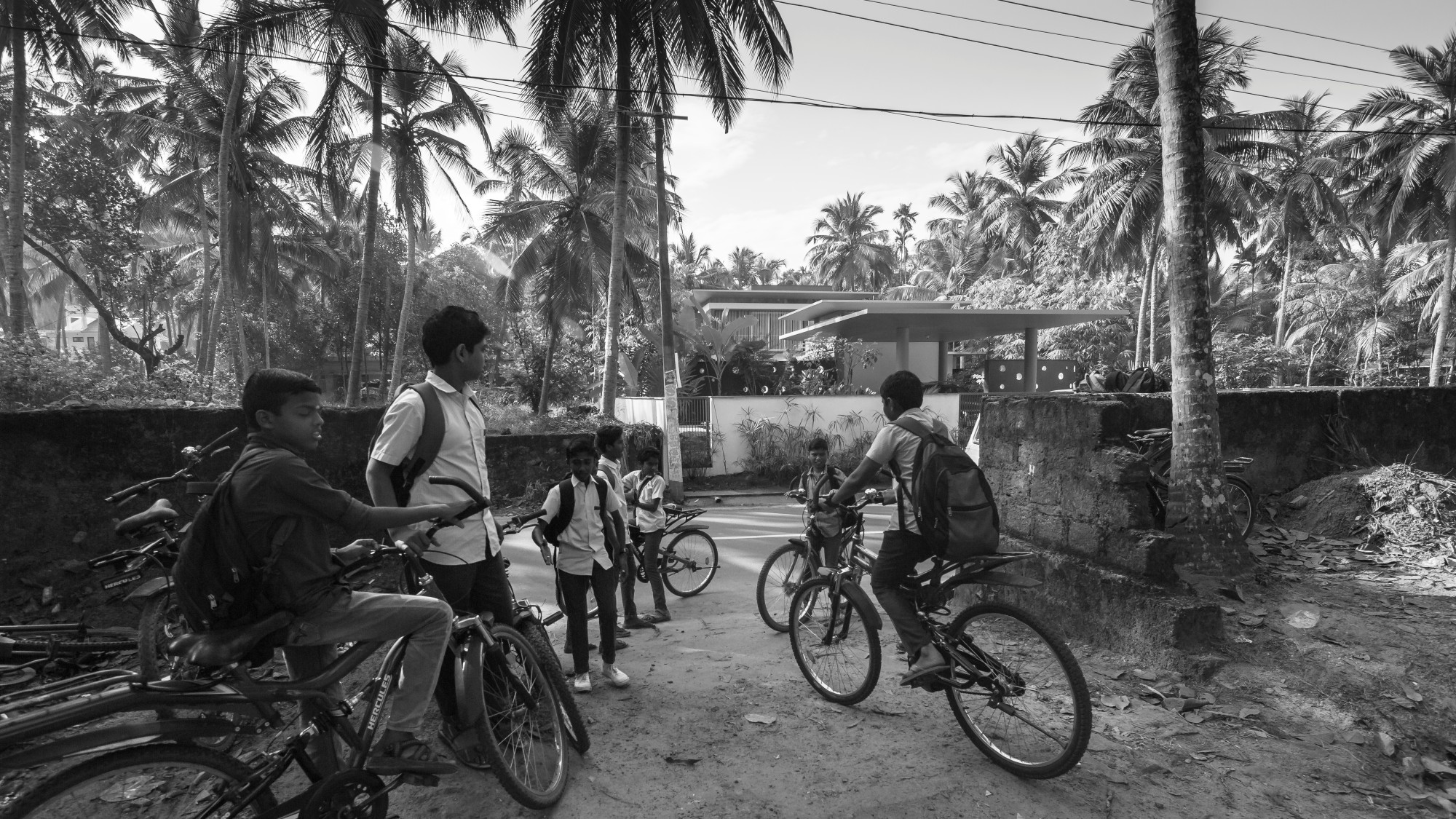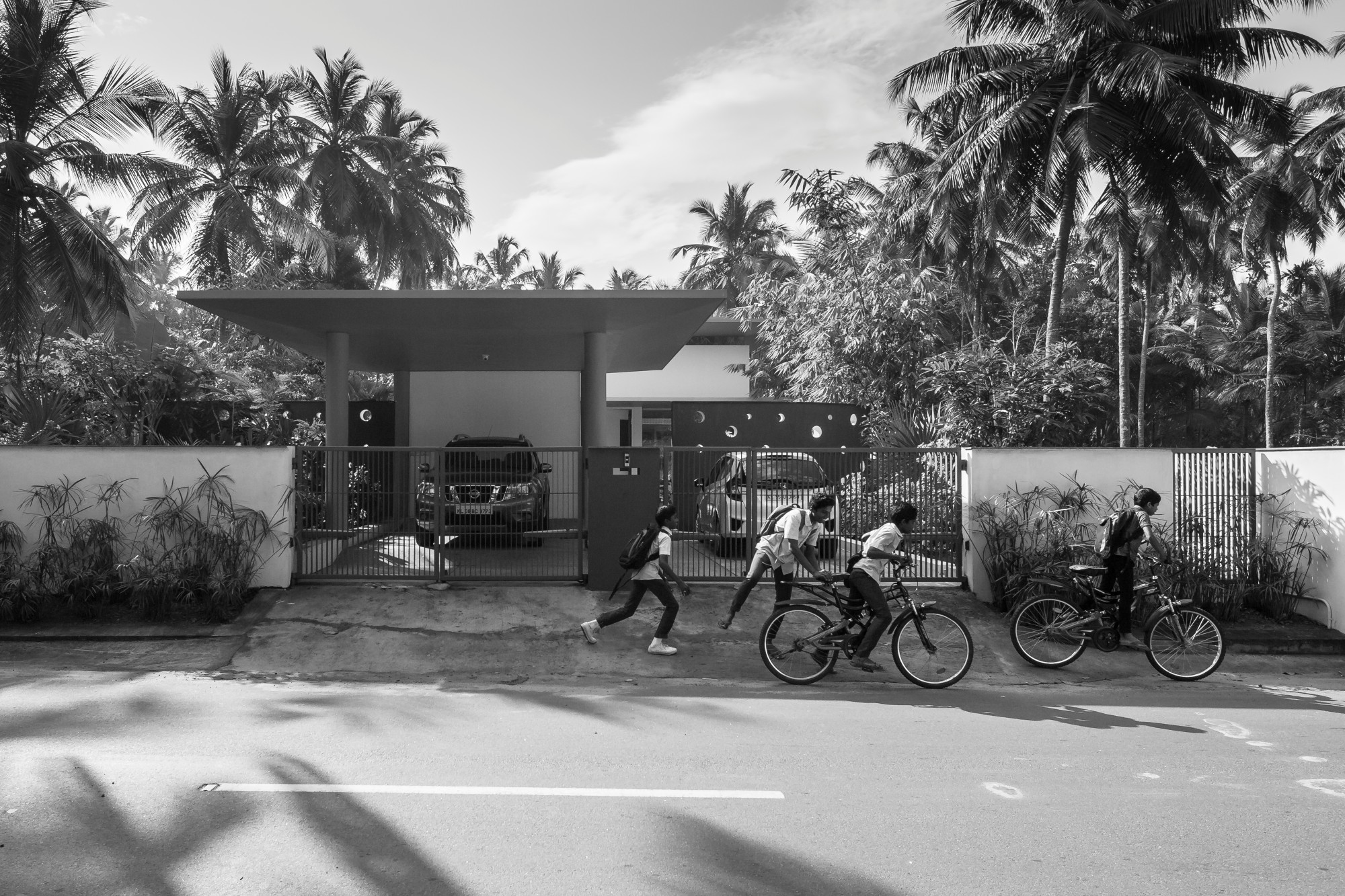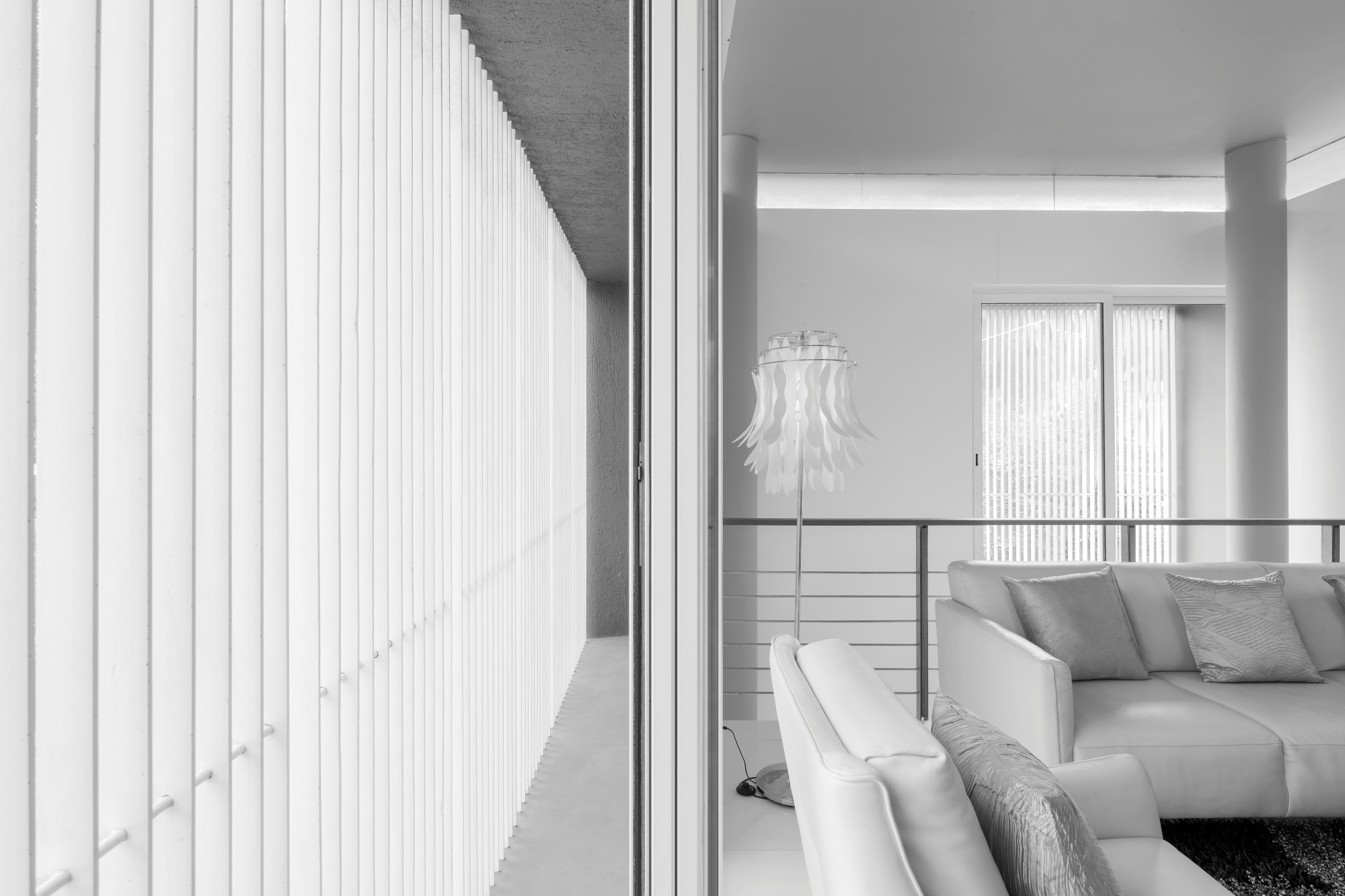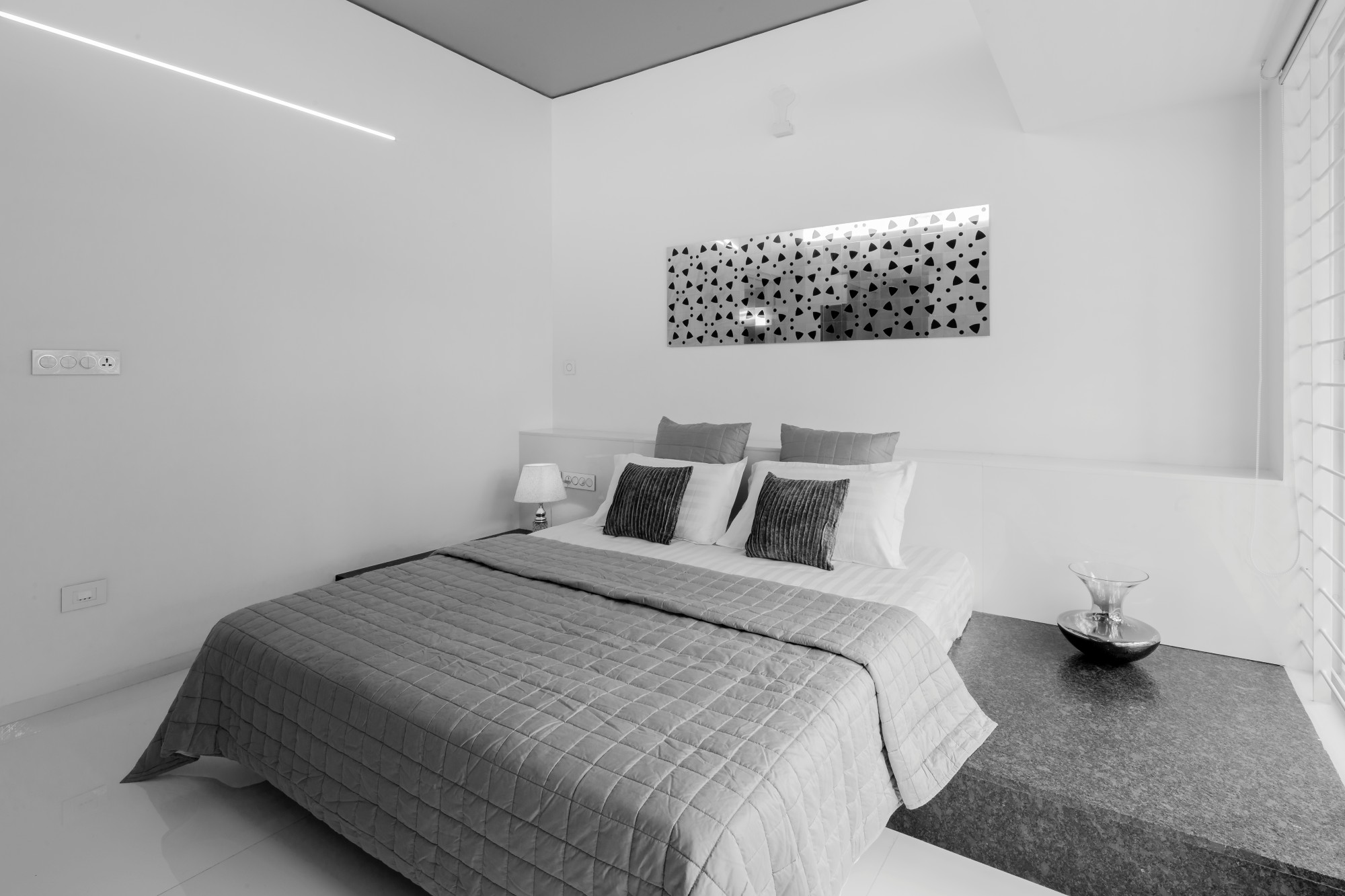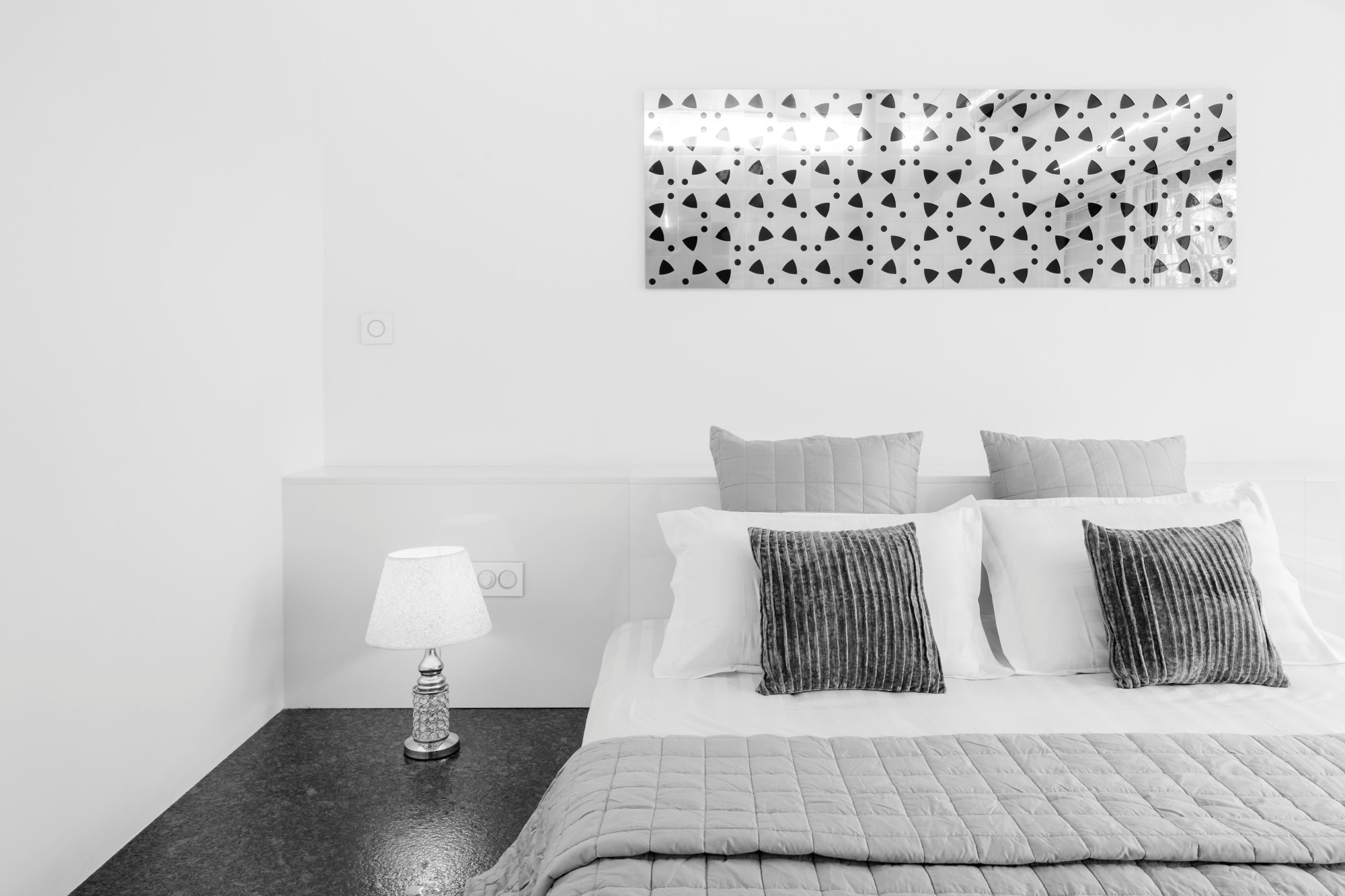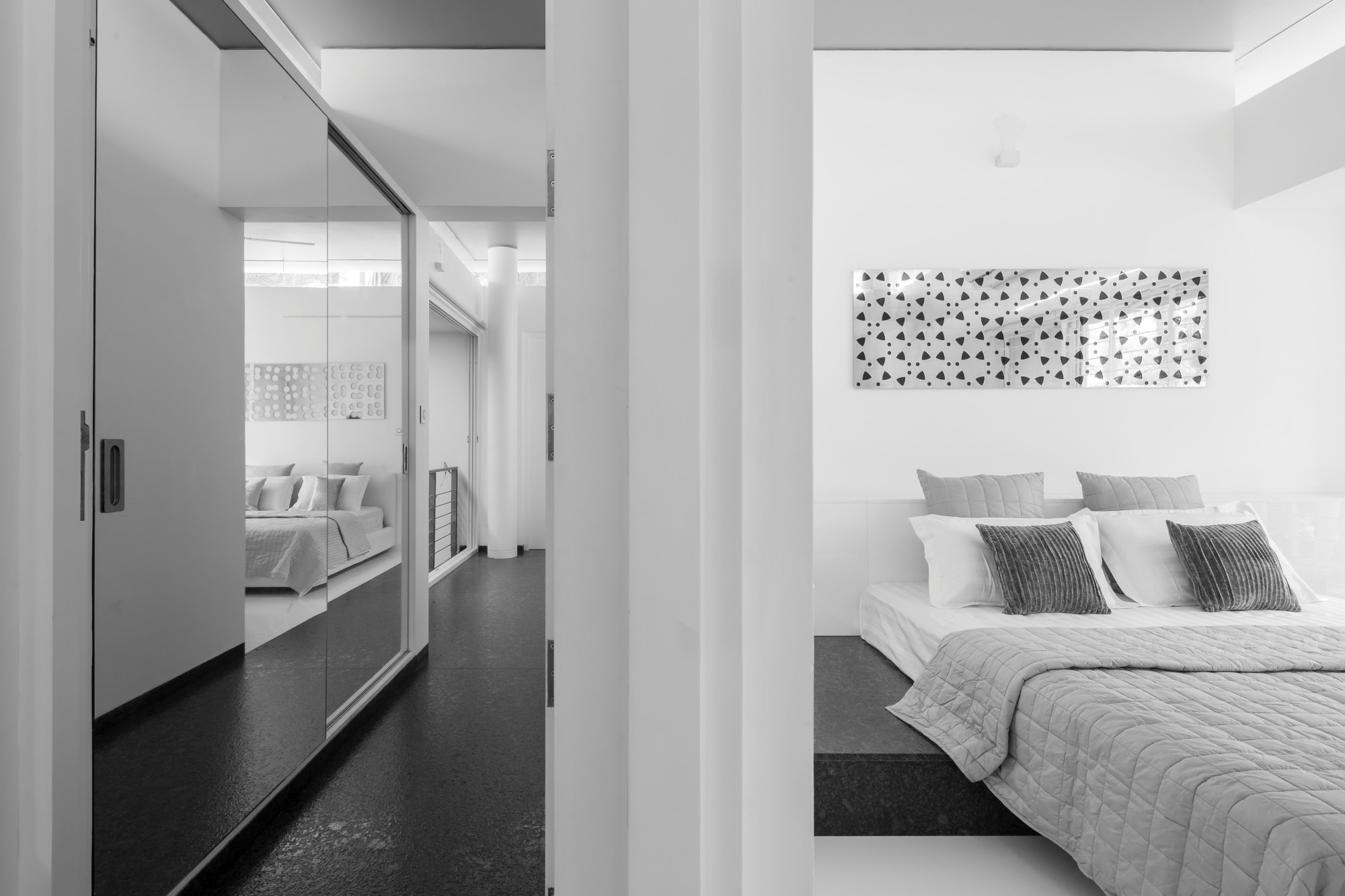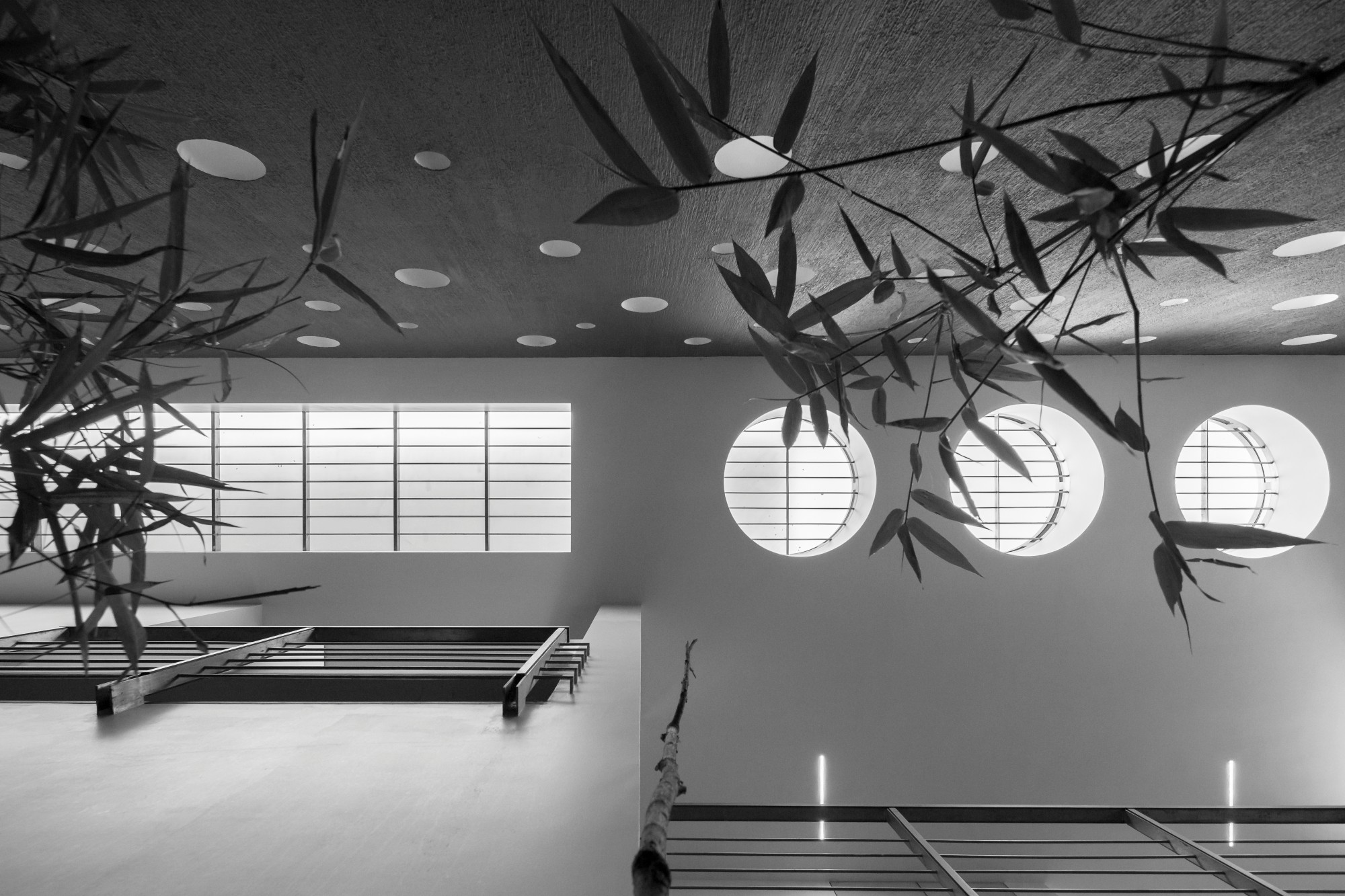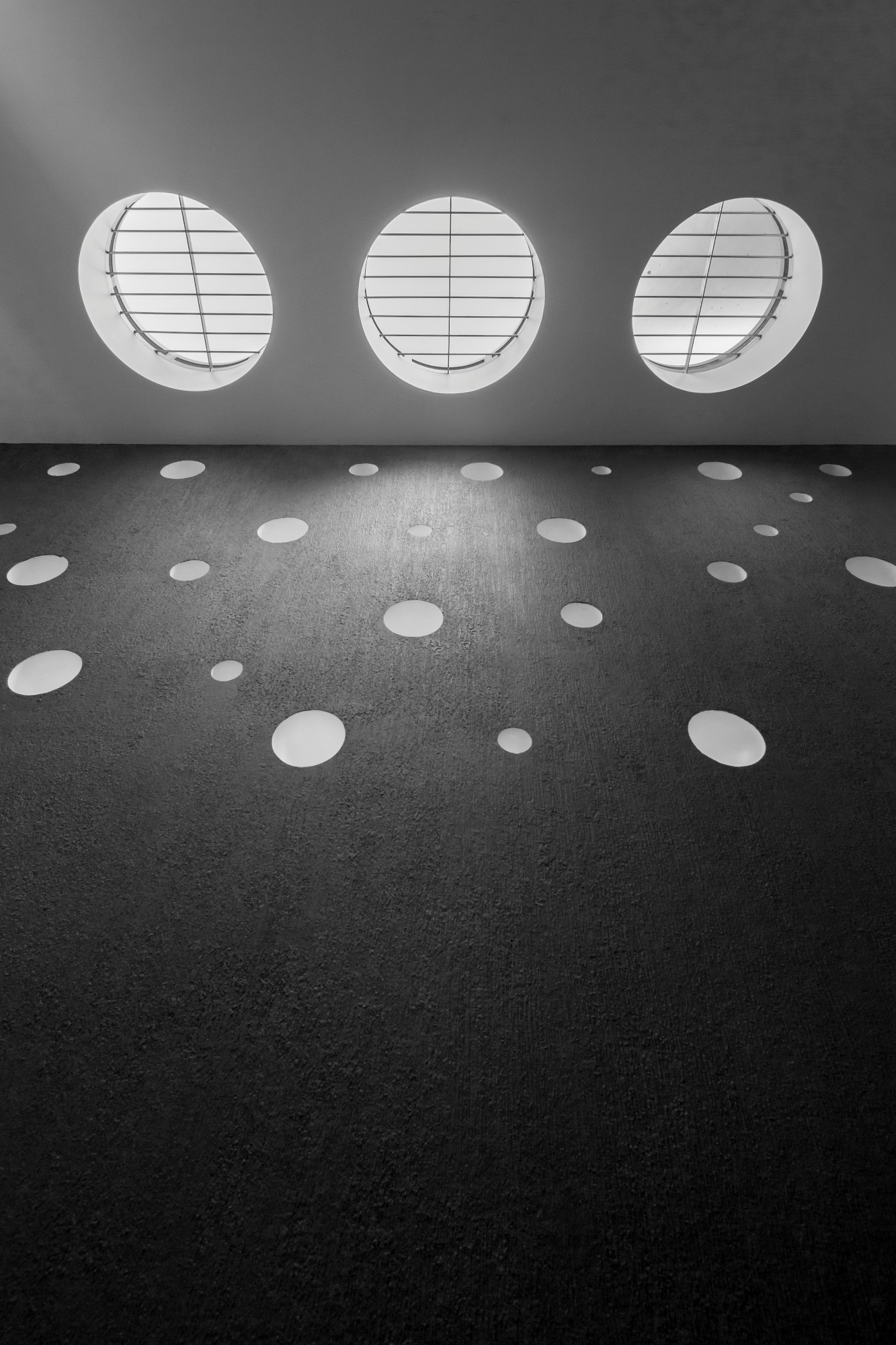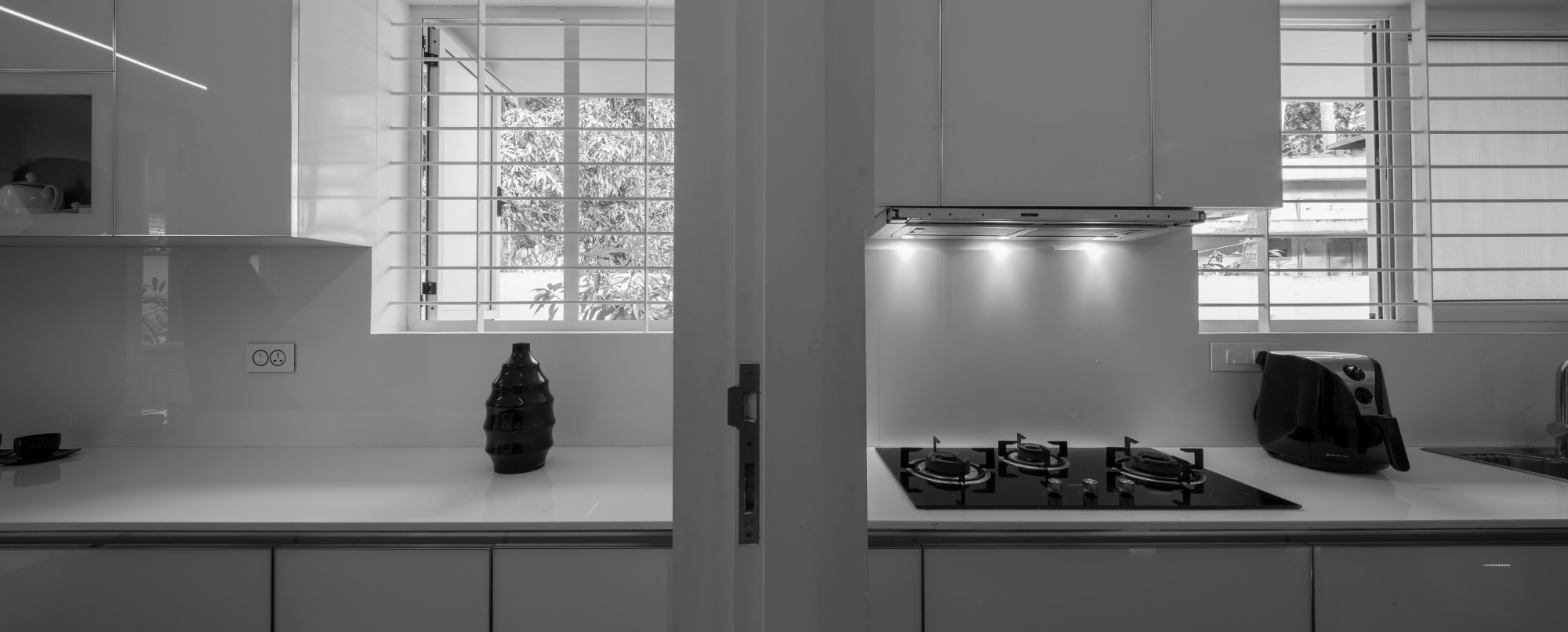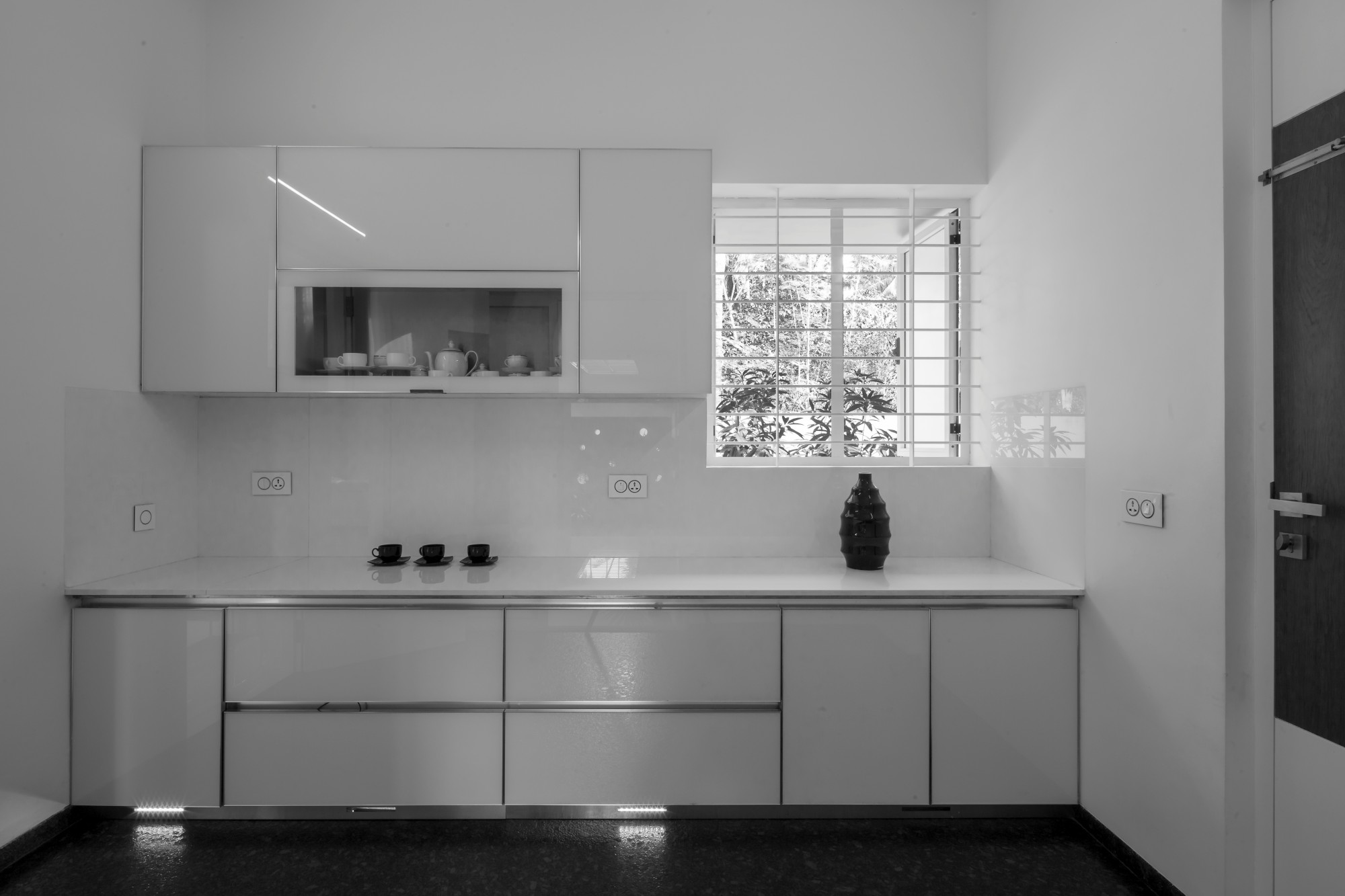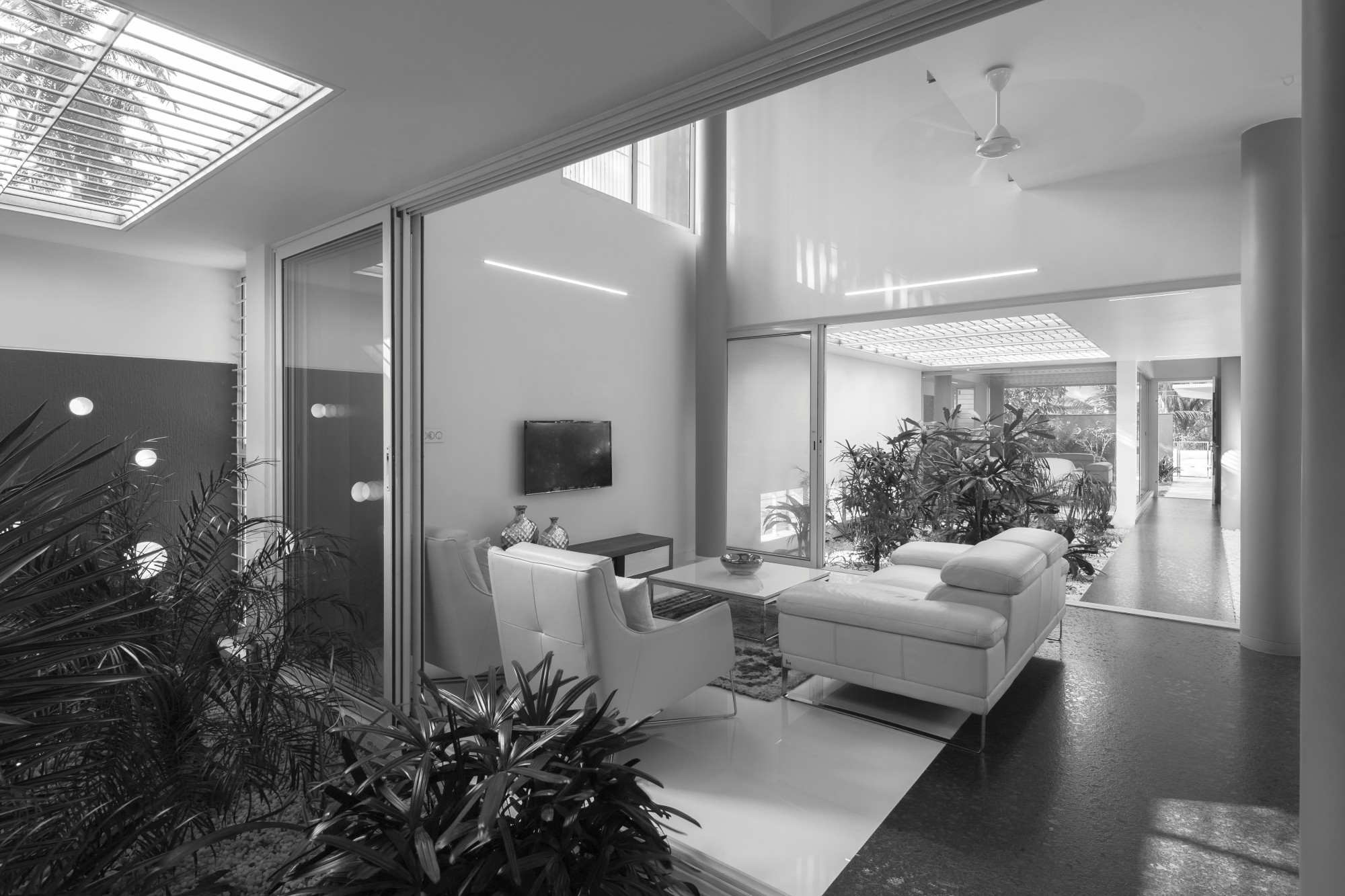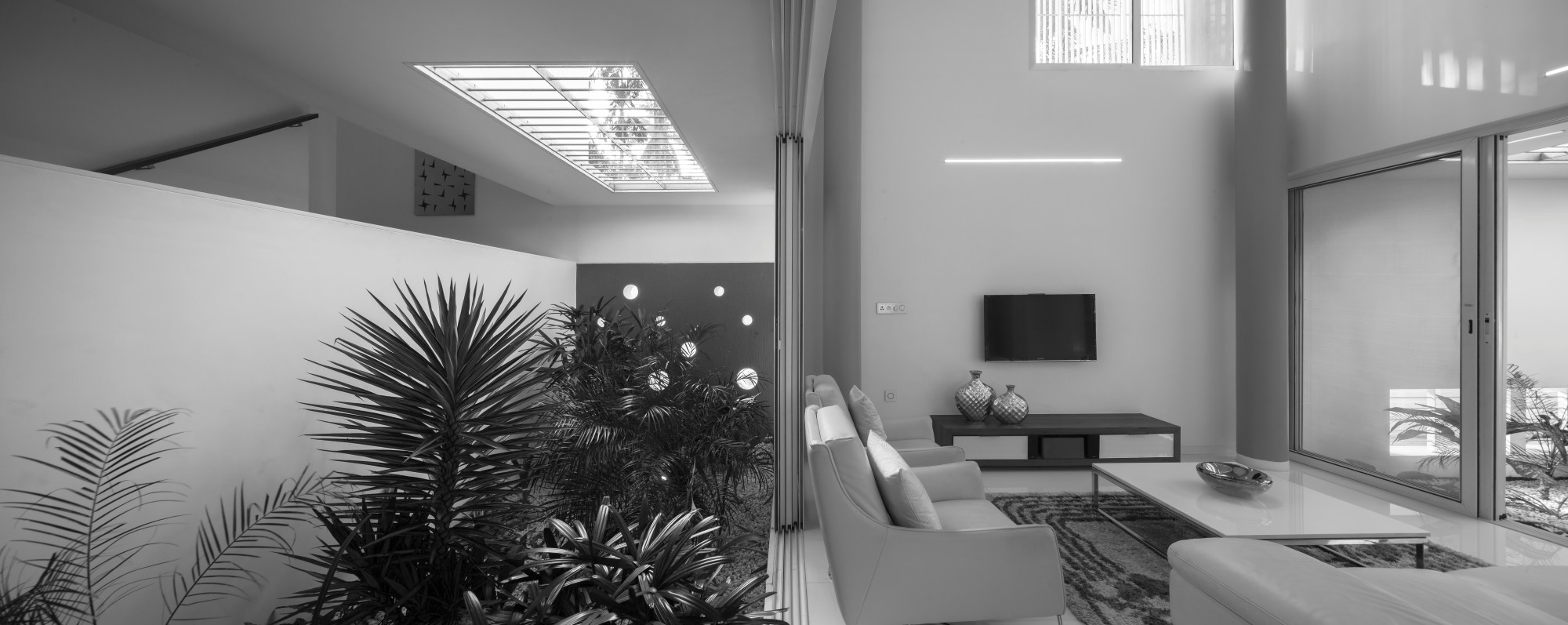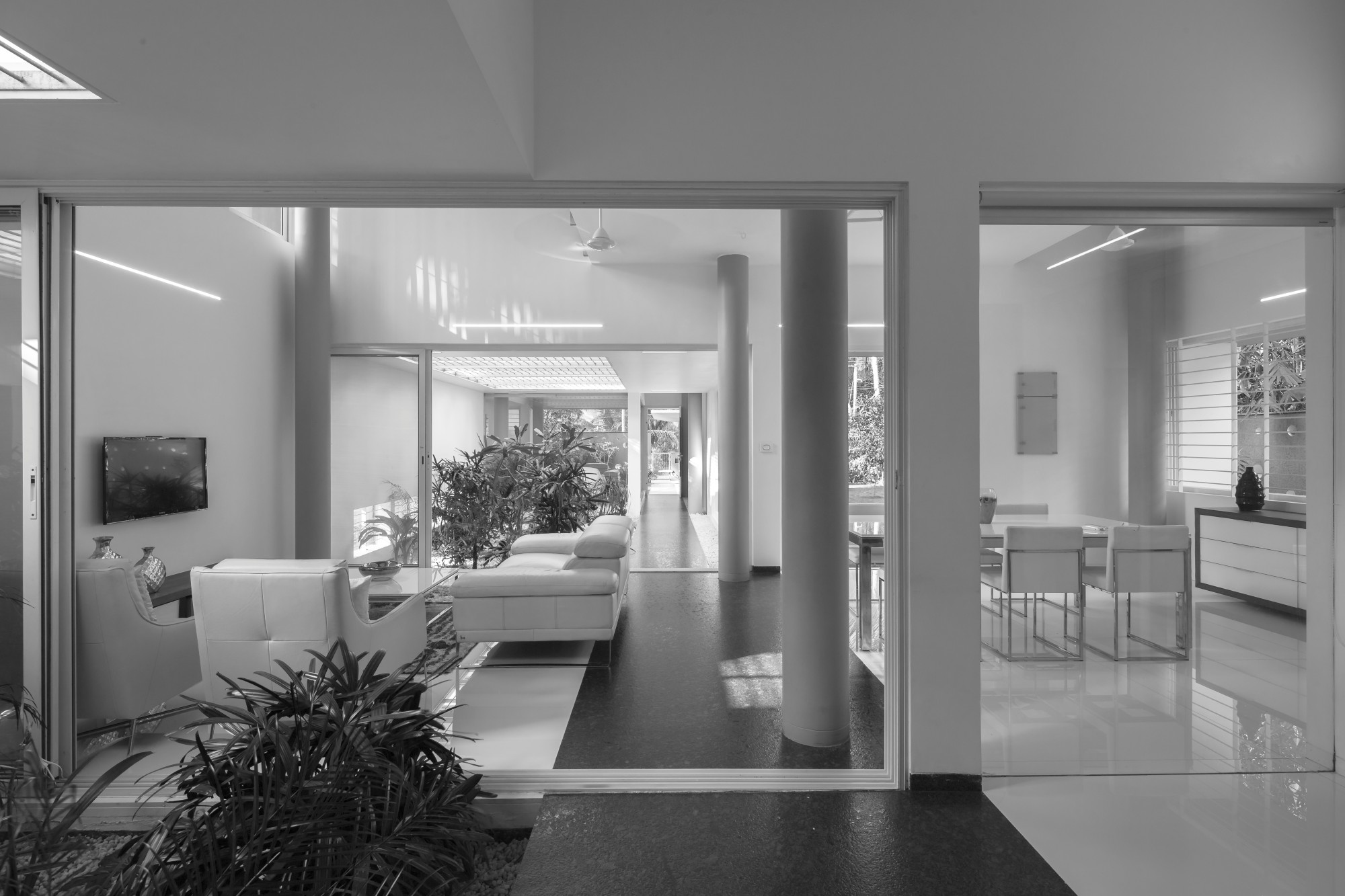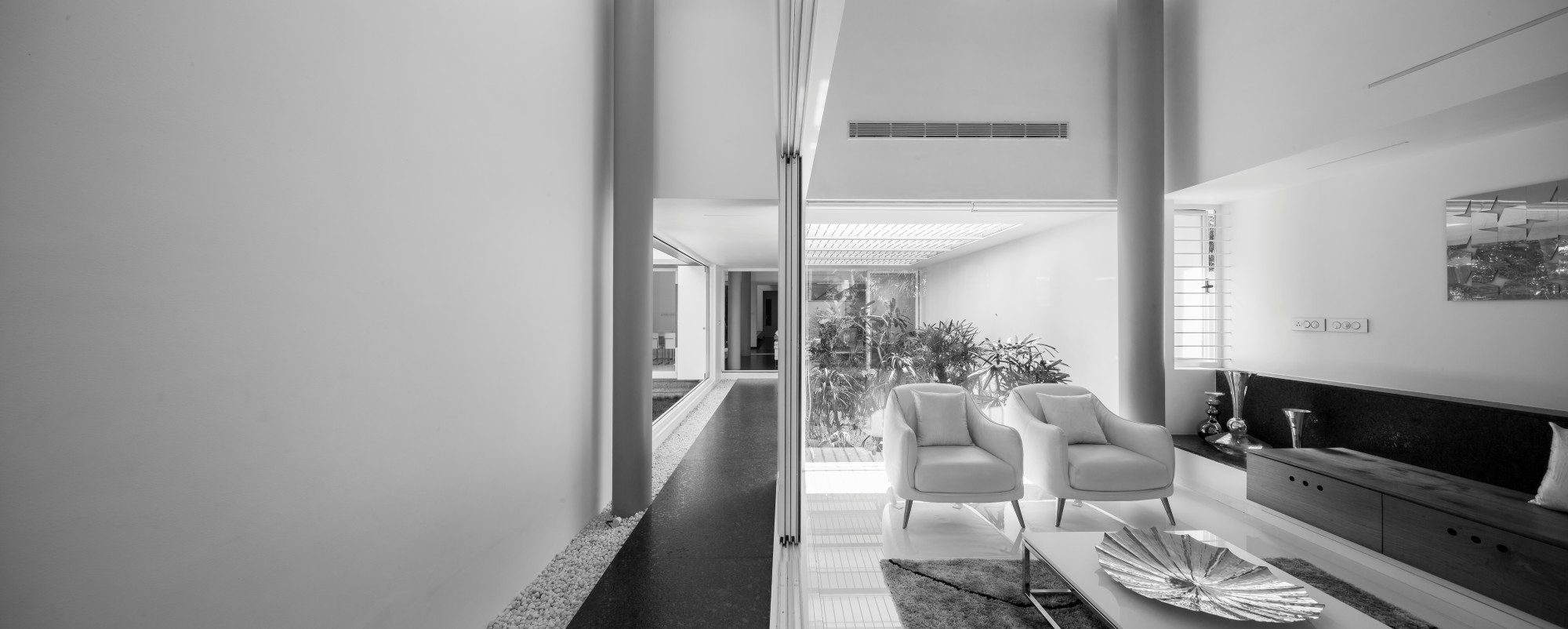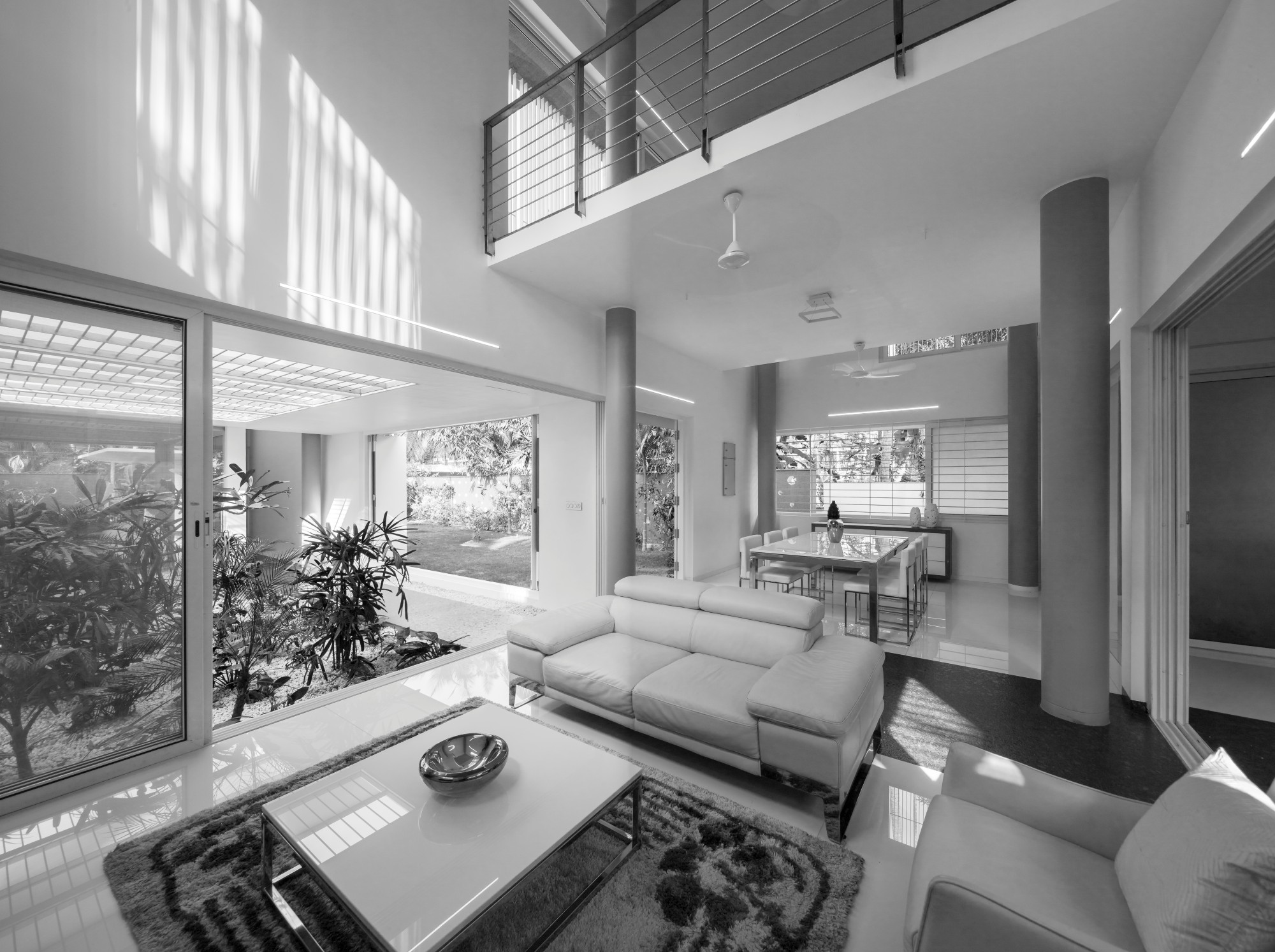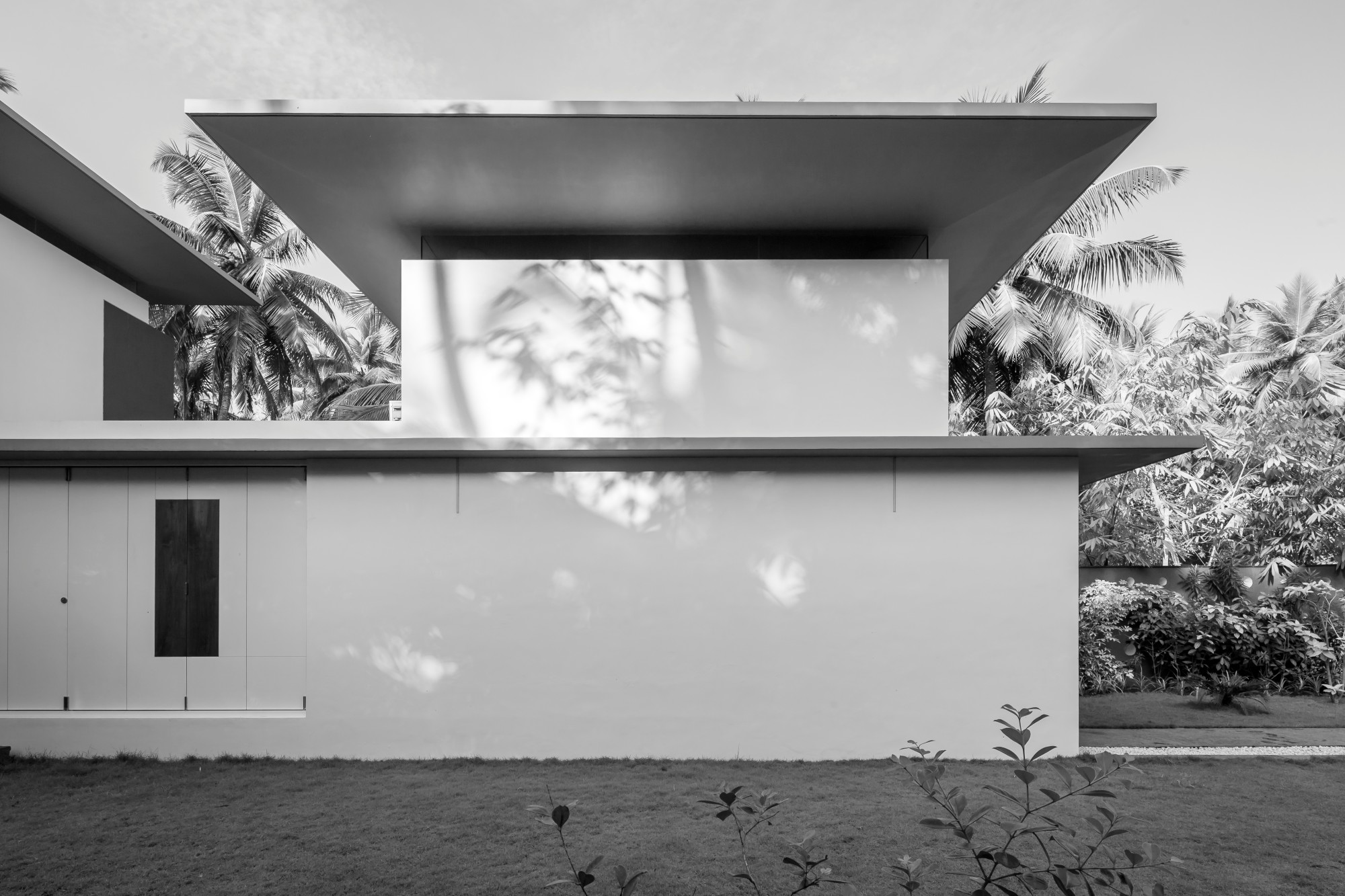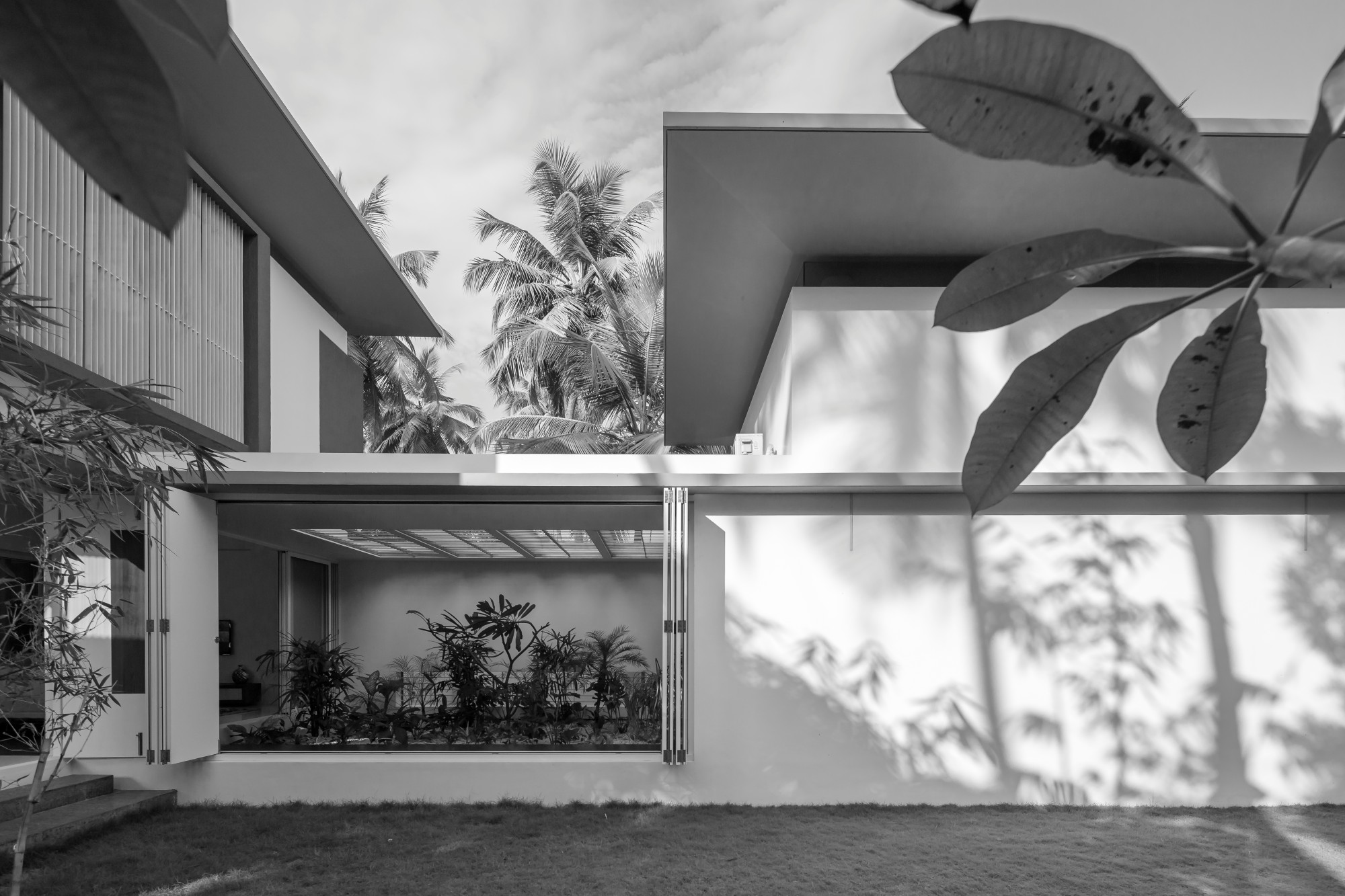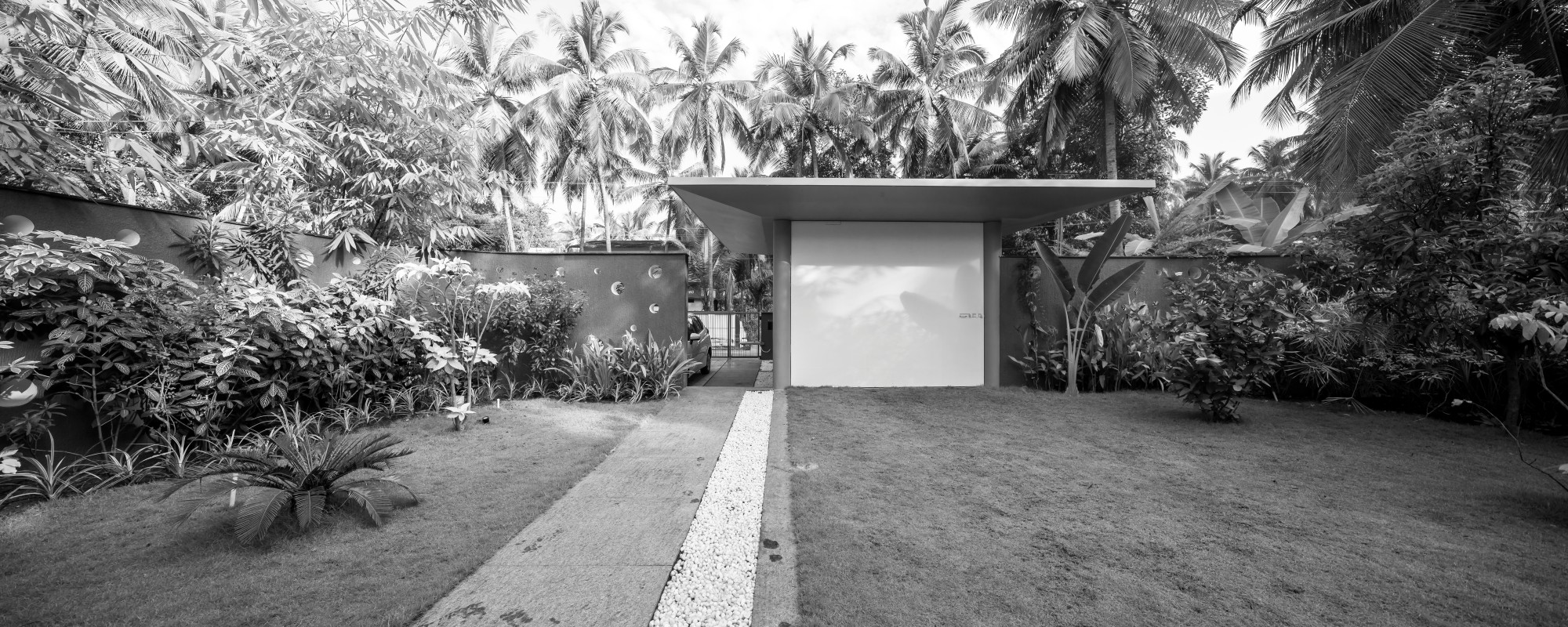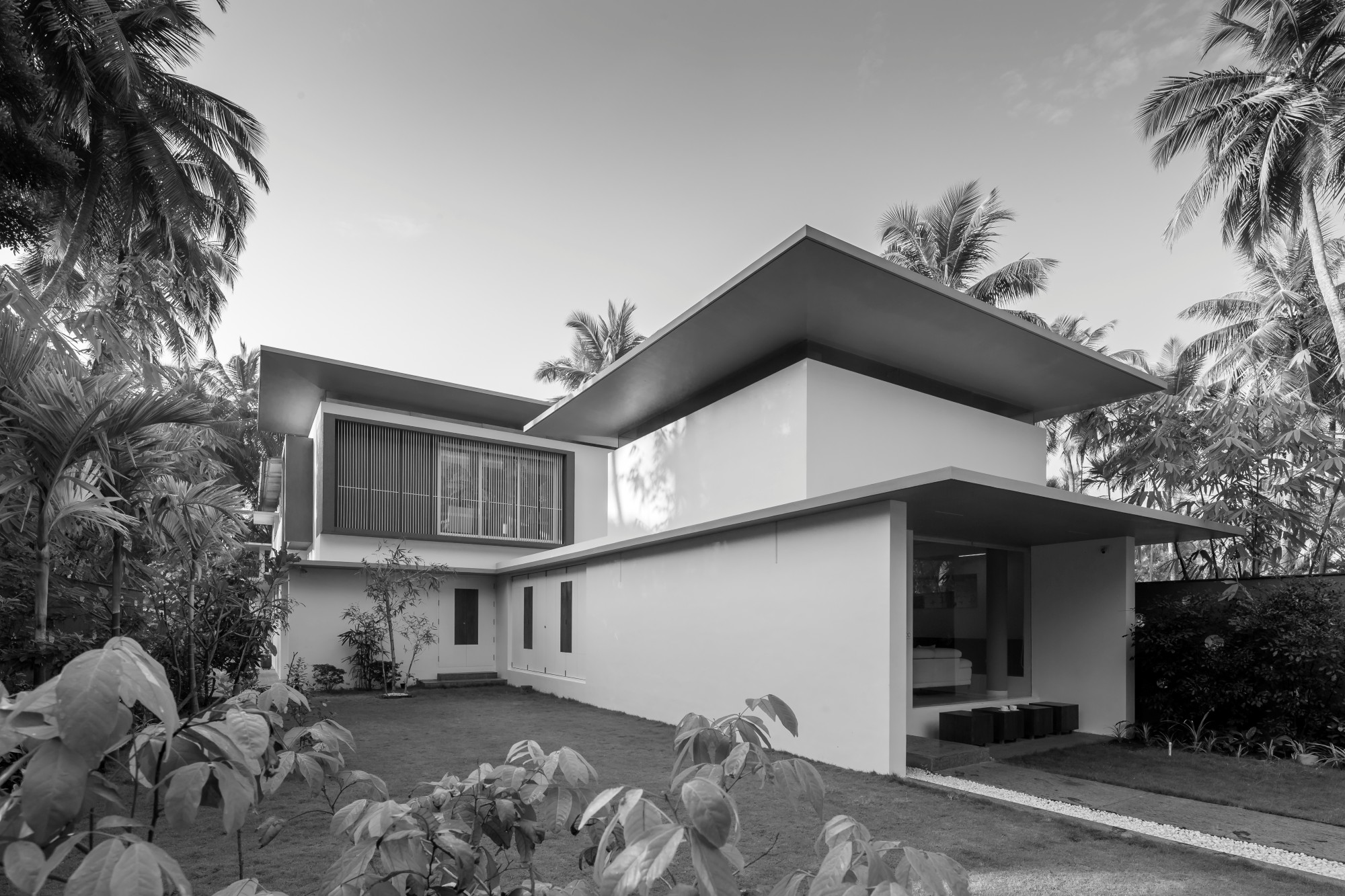 Set in a semi urbanised strip that border a busy road in the otherwise sleepy suburb of Tirur,‘The Floating Parasol House’ sits on a linear plot with its shorter side abutting the street. Built for a privacy conscious family, the house was tucked towards the rear to accommodate a garden in the front, enclosed by means of a secondary landscape wall, that shield the house from the cacophony of the vehicular traffic and the commotions on the street.
Set in a semi urbanised strip that border a busy road in the otherwise sleepy suburb of Tirur,‘The Floating Parasol House’ sits on a linear plot with its shorter side abutting the street. Built for a privacy conscious family, the house was tucked towards the rear to accommodate a garden in the front, enclosed by means of a secondary landscape wall, that shield the house from the cacophony of the vehicular traffic and the commotions on the street.
The house covers an area of 4600 Sqft and consists of three main blocks separated by open to sky/skylit courts. The first block contains the sit-out, foyer and the formal living. The second houses the family living on both the floors, dining, kitchen, utility, etc. The third block has two bedrooms and its toilets on each floor. The car porch, which is separated from the main building, is in a restrained scale so as to relate to the street. The massing of the house was also carefully planned to progress gently towards the rear and avoid an imposing street side presence. A path, reflecting the linearity of the site, stretches from the pedestrian gate to the master bedroom and forms a strong circulation spine that dictates the sequential flow of spaces.
Teak wood, nano white slabs, lapato/ flamed steel grey granite, mirrors and glass constitute the main material palette used in the interiors. A selection of accessories and curios in silver sheen along with custom designed wall art,in cnc cut stainless steel sheet and lacquered glass, finishes the interiors in minimalist simplicity. The large, glass and aluminium, sliding doors blur the interior-exterior divide and also help the internal spaces flow into each other.
The roof slabs, independent of the walls below, are supported on circular rcc columns making them seem like they are floating. The glazed gap between these floating roofs and the walls bring in diffused light during the day and emit internal light at night while accentuating its floating feel. These roofs also shade the mass below from the harsh tropical sun. All spaces are naturally cross ventilated. Moreover the combination of strategically placed courtyards, skylights and volumetrically interconnected spaces, help keep the internal temperature at a minimum, without resorting to any artificial ventilation, making the house comfortable throughout the year.
Project Facts:
Project: The Floating Parasol House
Location: Thirur, Kerala, India
Client: Mr.Basheer and family
Site: 22.19 cents (898sqm)
Area: 4600sqft
Project Year: November 2015
Interior Design: LIJO.RENY.architects
Design Team: Ar. Reny Lijo and Ar. Lijo Jos
Contractor: Muneer,Thirur
Photographs: Praveen Mohandas and Suneesh Suresh

